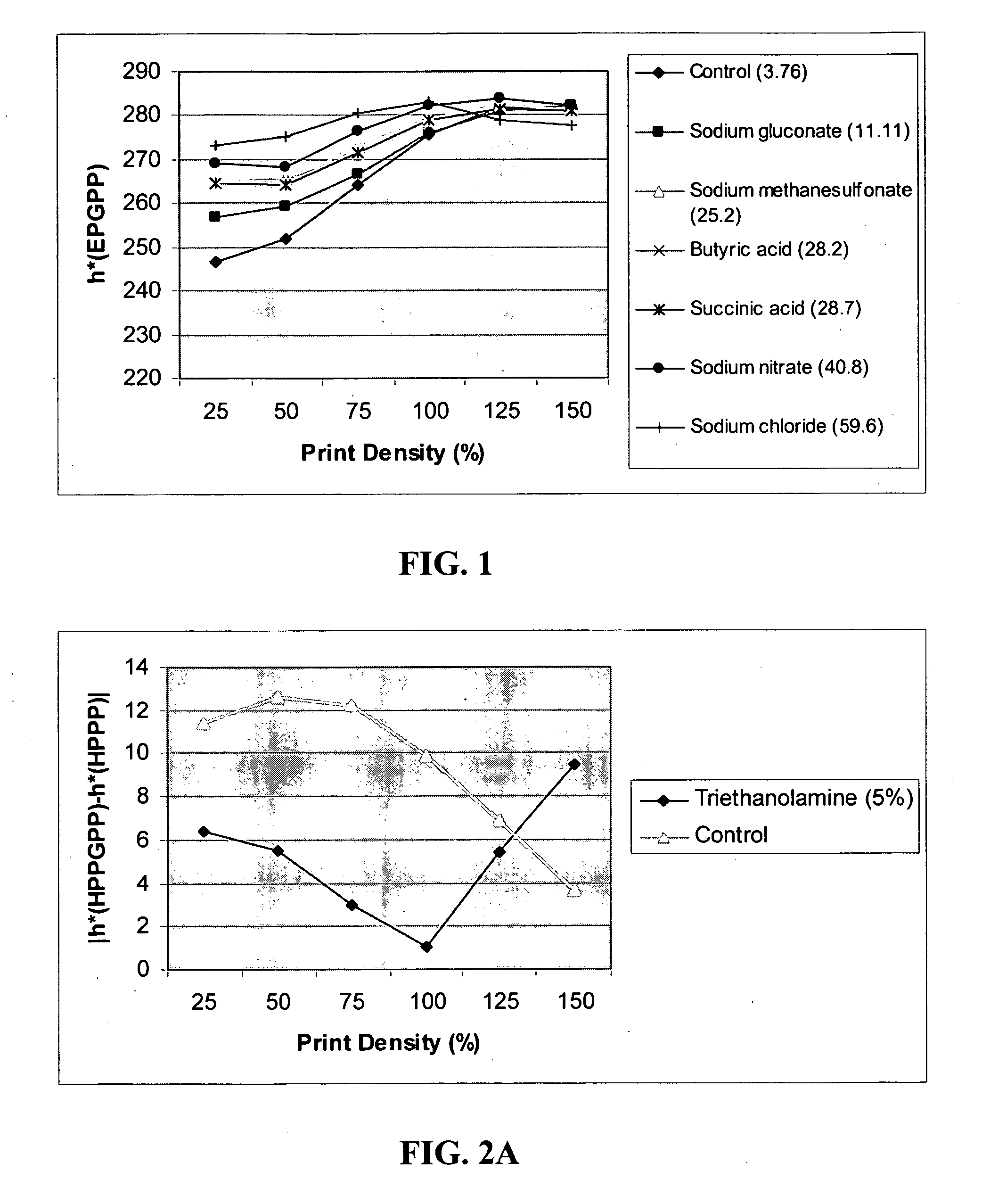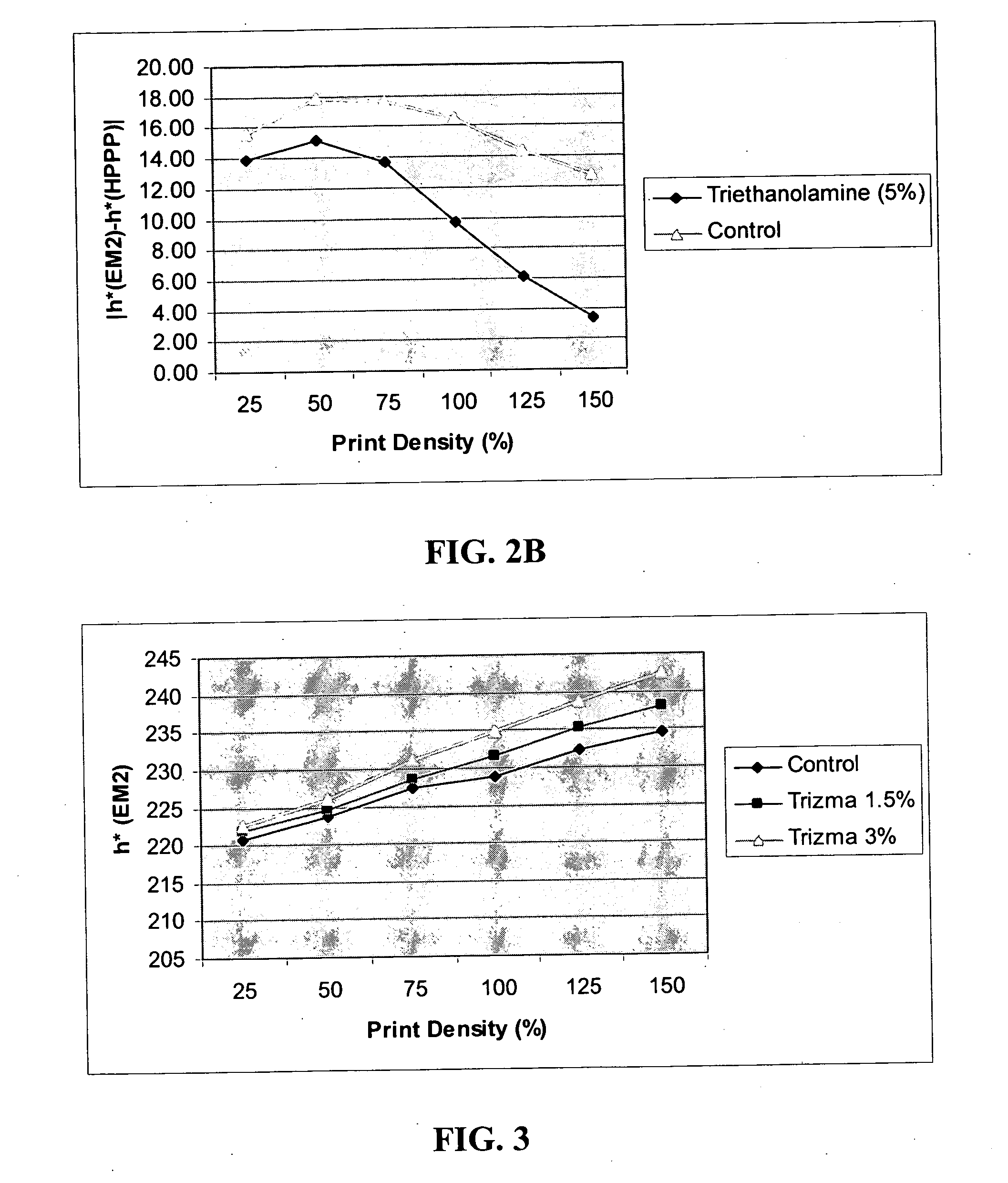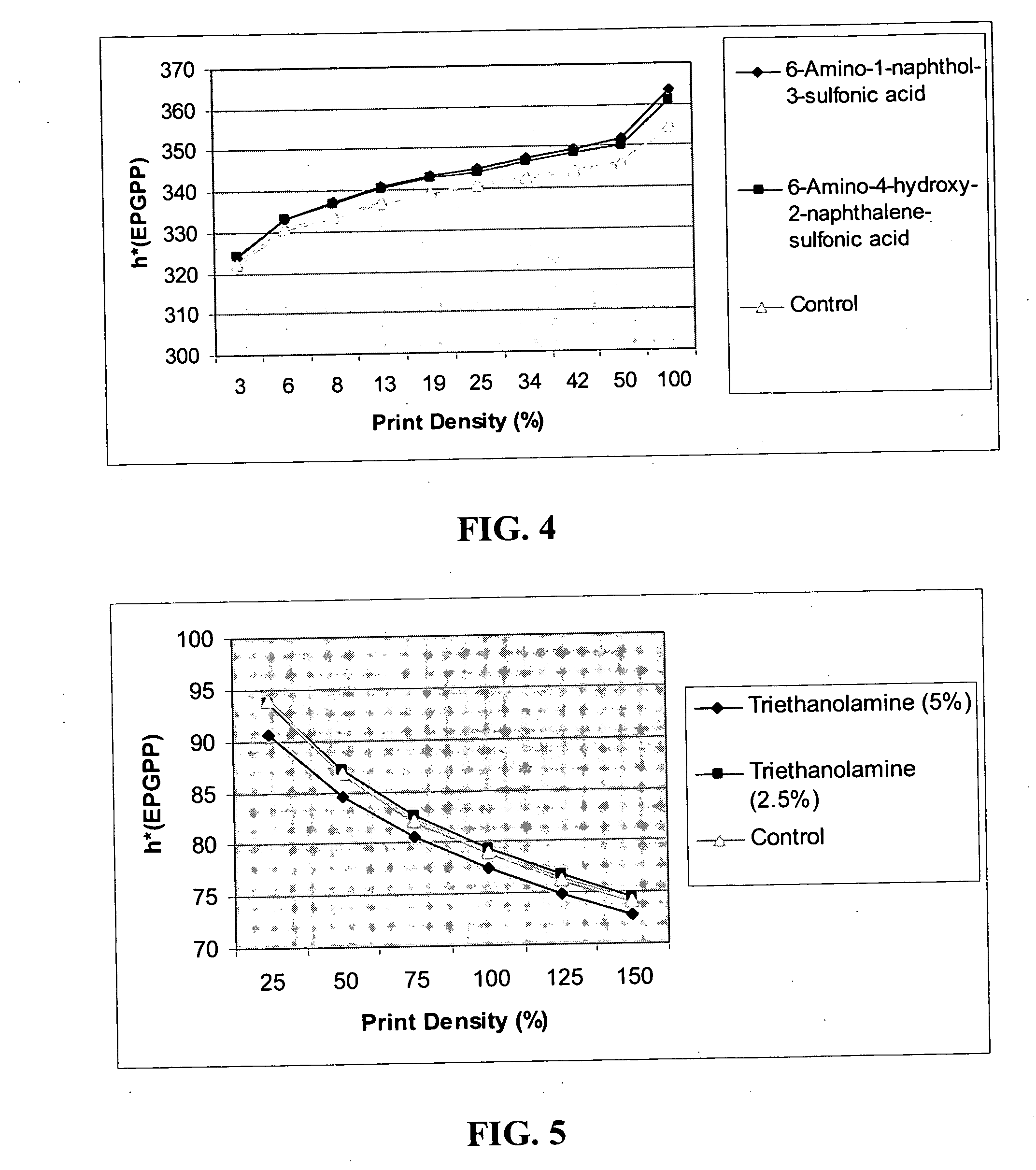Ink compositions and methods for controlling color on a print medium
- Summary
- Abstract
- Description
- Claims
- Application Information
AI Technical Summary
Benefits of technology
Problems solved by technology
Method used
Image
Examples
examples
[0032] The following examples describe various embodiments of ink compositions and methods for printing the ink compositions on a medium with a pen of an ink jet printer in accordance with the present invention. The examples are merely illustrative and are not meant to limit the scope of the present invention in any way. The following examples, except where otherwise noted, use an ink vehicle including approximately 10% DEG, 1.5% Triton X-100, and 0.2% Trizma base. In the examples, the pH is between about 8 to about 8.5.
example i
[0033] Varying amounts of an ink additive for controlling color of a colorant are admixed in an ink vehicle having a colorant, such as Projet cyan 485 dye. In the exemplary embodiment, the ink additive is sodium acetate. The ink composition is printed on a porous print medium such as an experimental medium. The hue angle data of a 150% area fill block for the printed ink as a function of sodium acetate concentration is determined. The results are shown in Table 1 which indicates the color change in relation to the ink additive concentration.
TABLE 1Example of maximum hue angle as a function ofsodium acetate concentration of an ink containing Projet cyan485 dye on experimental porous medium 3.Sodium acetateconcentrationHue angle at(wt %)150% area fill0.52212.52375.5247
As illustrate in Table 1, the hue angle increases with an increasing amount of ink additive. Thus, the increased ink additive concentration is able to control the color of the colorant.
example ii
[0034] An ink composition including an ink additive for controlling color of a colorant is prepared in an ink vehicle having a colorant such as DB199 dye. In this exemplary embodiment, the ink additive is 4,5-dihydroxy-1,3-benzenedisulfonic acid. The ink composition including the ink additive, or control ink composition having no additive, is printed on a swellable medium such as HPPGPP and a plain paper medium such as HPPP.
[0035] As known by those of ordinary skill in the art, the CIE L*a*b* system is used to measure or specify the chromaticity (c*, square root of the sum of a*2 and b*2) or the properties of hue [arc tan(b* / a*)] and saturation (c* / L*) on a two-dimensional chromaticity diagram. The a* measures redness-greenness on the x-axis, or the horizontal axis, and b* measures yellowness-blueness on the y-axis, or the vertical axis. The L* measures lightness-darkness on the z-axis. To assess the chromaticity of the ink compositions and the ability of the ink additives of the p...
PUM
| Property | Measurement | Unit |
|---|---|---|
| Fraction | aaaaa | aaaaa |
| Fraction | aaaaa | aaaaa |
| Electrical conductivity | aaaaa | aaaaa |
Abstract
Description
Claims
Application Information
 Login to View More
Login to View More - R&D
- Intellectual Property
- Life Sciences
- Materials
- Tech Scout
- Unparalleled Data Quality
- Higher Quality Content
- 60% Fewer Hallucinations
Browse by: Latest US Patents, China's latest patents, Technical Efficacy Thesaurus, Application Domain, Technology Topic, Popular Technical Reports.
© 2025 PatSnap. All rights reserved.Legal|Privacy policy|Modern Slavery Act Transparency Statement|Sitemap|About US| Contact US: help@patsnap.com



